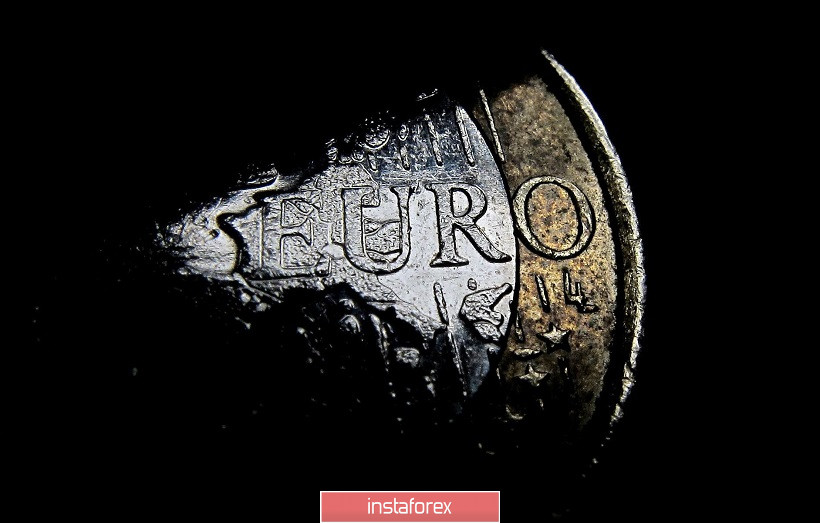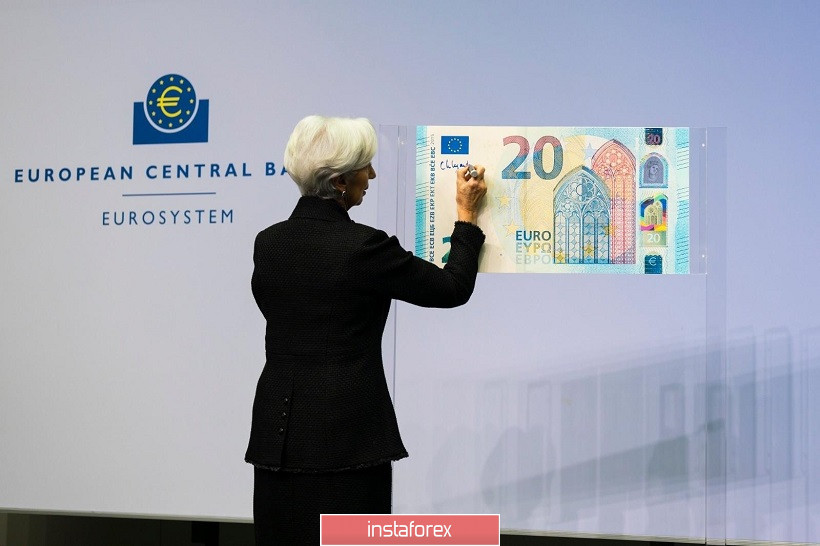The EUR / USD pair reacts sharply to economic forecasts from the European Commission, which are published three times a year, mainly by winter, spring, and autumn. This time was no exception - in response to the release of the spring report, the euro sank throughout the market, and paired with the greenback, it tested the seventh figure. The bears of the EUR / USD, as well as the German Constitutional Court, indirectly helped on the eve of the decision on the bond purchase program. And although Brussels has already stated that "the German court does not issue a decree to the European Central Bank," the general anxiety among traders has persisted. This nervousness was reflected in the positions of the greenback, which continues to hold the status of a protective asset. The dollar index again crossed the hundredth figure,

The report of the European Commission indicates a bad scenario following the EC spring forecast suggesting that in 2020, Europe will face a "recession of historical proportions". According to preliminary estimates, eurozone GDP will fall by a record of 7.75%. The worst situation is in Greece, where the economy is expected to decline by almost 10 percent (9.7%). The GDP of Italy and Spain may also fall by more than 9% (9.5% and 9.4%, respectively). The situation is expected to be slightly better in France where according to experts of the European Commission, its economic decline will be limited to eight percent. While the German economy will slow down by 6.5%.
In addition, the European Commission noted that due to the pandemic and quarantine measures, economic activity in the European Union has declined sharply by about a third. This has led to a slowdown in demand, supply, industrial production, lower investment, trade and capital flows. In view of these factors, further decline in European inflation is expected. According to EC forecasts, consumer prices for the current year will fall significantly amid a sharp weakening in demand, as well as amid an equally sharp drop in oil prices. Also, unemployment will increase in the eurozone up to 9.5%, although, as the European Commission recognized, "the ongoing political measures are holding back the decline in unemployment in the EU."
As you can see, the forecast of the EC outlined quite gloomy prospects. And here it is necessary to take into account that the announced scenario is the most optimistic - it is based on the hypothesis that starting in May Europe will begin to gradually quarantine, and the pandemic will come to naught by the end of this year. In this case, in 2021, the eurozone economy will grow by 6.25%. But if in the fall the second wave of a pandemic ensues (which virologists do not rule out), the situation will turn out to be much worse.
In other words, the single currency was justifiably under pressure, especially against the backdrop of the recent decision of the German Constitutional Court, which gave the European Central Bank three months to prove that the first QE program complies with its authority and, in general, the requirements of the law. Brussels flaunts the fact that the decisions of the European Court take precedence over the decisions of the domestic courts. But, according to some experts, the German judicial verdict will have much wider consequences.
In particular, it is expected that in the foreseeable future, the constitutional courts of Hungary and Poland will follow this precedent. In addition, traders express concern about the fate of the ECB's latest stimulus package, about an emergency asset buyback program in the context of the coronavirus pandemic. It is also worth considering that the position of the German Themis will force members of the European regulator to exercise great caution in matters of expanding the quantitative easing program - all such decisions will be appealed to the German Constitutional Court, the legal mood of which we already know. Do not forget that the resonant decision of the German court appeared at the moment when Lagarde announced the extension of the program for the purchase of government bonds for 750 billion euros to combat the pandemic.

Of course, the European Central Bank will present the argument requested by German judges regarding the legality of its actions. But now no one can accurately evaluate the political consequences of the above decision of the German Themis, especially since the Bundesbank, represented by Jens Weidmann, has long opposed the program of buying government bonds of troubled countries. The exclusion of the largest shareholder and buyer of ECB bonds would jeopardize the viability of the public sector purchasing program. And in a broader political aspect, it will raise the question of the role of Germany in the European Alliance.
Such an array of unresolved issues, as well as the gloomy forecast of the European Commission, leaves no chance for the euro to recover. Under these conditions, the EUR/USD pair can demonstrate corrective growth only due to the weakening of the greenback - for example, after the release of Friday Nonfarm. But until this moment, a further decline is expected for the pair, at least to the first support level of 1.0750 (the lower line of the Bollinger Bands indicator on the daily chart). A breakthrough of this level will allow EUR/USD sellers to approach the base of the seventh figure.





















